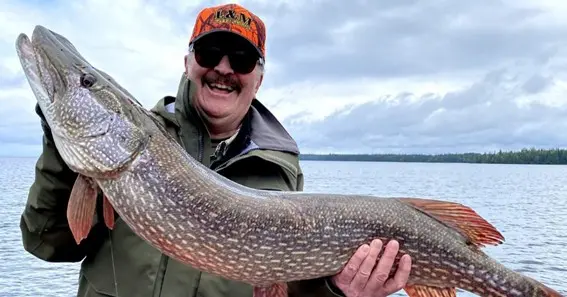Removing a fly from a pike’s mouth requires careful handling due to the fish’s sharp teeth and strong jaws. Proper techniques are essential to ensure the safety of both the angler and the fish.
Understanding Pike Anatomy
Pike are known for their elongated bodies and formidable dentition, featuring numerous sharp teeth designed for grasping prey. Their powerful jaws can pose challenges during hook removal, making appropriate handling techniques crucial.
Essential Tools for Safe Fly Removal
- Long-Nosed Pliers: These allow for deep reach into the pike’s mouth, facilitating hook removal while keeping fingers at a safe distance.
- Jaw Spreaders: Useful for keeping the pike’s mouth open, providing better access to the hook.
- Protective Gloves: Wearing gloves can protect hands from accidental contact with teeth and gill rakers.
Step-by-Step Guide to Removing a Fly from a Pike’s Mouth
- Secure the Pike: After landing the pike, use a net to keep it in the water, reducing stress. If a net isn’t available, hold the pike firmly behind the head or use the ‘chin grip’ method by placing fingers inside the gill plate, avoiding the gills themselves.
- Open the Mouth: Gently insert jaw spreaders to keep the mouth open, ensuring clear access to the hook.
- Assess Hook Placement: Determine the hook’s position. If it’s deeply embedded or near sensitive areas like the gills, proceed with extra caution.
- Remove the Hook: Use long-nosed pliers to grasp the hook firmly. Apply gentle pressure to back the hook out along the entry path. If resistance is met, consider using wire cutters to cut the hook, minimizing tissue damage.
- Release the Pike: Once the hook is removed, support the pike in the water, allowing it to regain strength before swimming away. Ensure the fish is upright and shows signs of recovery prior to release.
Additional Tips
- Avoid Hand Insertion: Never place hands directly into a pike’s mouth; their teeth can cause serious injury.
- Minimize Air Exposure: Keep the pike in the water as much as possible during the process to reduce stress.
- Be Prepared: Always have the necessary tools accessible before fishing to ensure a swift and safe hook removal.
FAQ
- Why is it important to use tools like long-nosed pliers when removing a fly from a pike’s mouth? Using tools keeps your hands away from the pike’s sharp teeth, reducing the risk of injury.
- What should I do if the hook is deeply embedded in the pike’s mouth? If the hook is deeply embedded, use wire cutters to cut the hook, minimizing damage to the fish.
- How can I safely hold a pike during hook removal? The ‘chin grip’ method involves placing fingers inside the gill plate, avoiding the gills, to control the pike’s head.
- Is it necessary to use jaw spreaders when removing a fly from a pike’s mouth? Jaw spreaders can be helpful in keeping the pike’s mouth open, providing better access to the hook.
- What precautions should I take to ensure the pike’s well-being during hook removal? Keep the pike in the water as much as possible, handle it gently, and minimize air exposure to reduce stress.
By following these guidelines, anglers can safely and effectively remove flies from pike, ensuring a positive experience for both the fisherman and the fish.By following these steps, anglers can ensure a safe release and minimize stress on the pike, preserving both the fish’s well-being and the integrity of the fly.
Dive into an intriguing read a-diamond-shaped-sign-is-a










